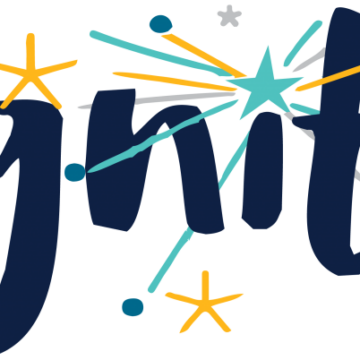Project Ignite
Innovation to Grow, Nurture, and Inspire Teachers of English-learners
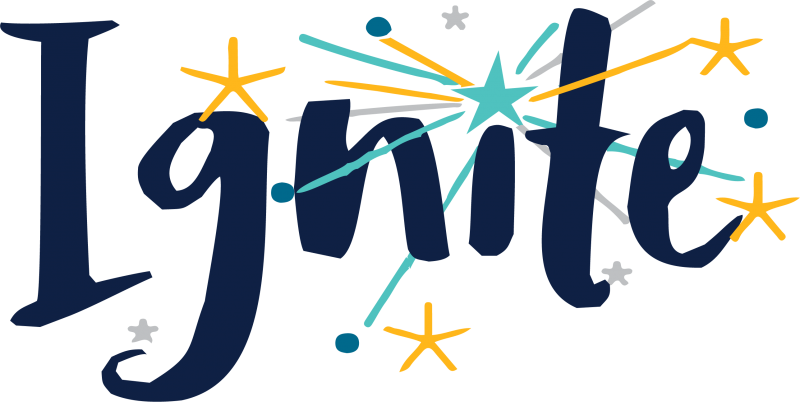
Project Ignite (Innovation to Grow, Nurture, and Inspire Teachers of English-learners) provides tuition support and professional learning opportunities for in-service and preservice teachers teaching in North Carolina or seeking NC teaching licensure to support equitable instruction for Multilingual learners and their families. Project Ignite covers the cost of tuition/fees at the NC resident rate. Non NC residents will be responsible for out-of-state tuition/fees. See Spartan Central for tuition rate schedule.
Project Ignite supports preservice ESL teacher preparation, ESL add-on licensure, and professional development for inservice teacher through UNC Greensboro’s TESOL program.
This project allows us to continue and expand the collaborations among UNC Greensboro, Guilford County Schools, Winston-Salem Forsyth County Schools, and NC DPI to advance ESL and DL/I teacher preparation in North Carolina.
Newsletter
Stay Connected!
We would like to connect with your immediate supervisor to let them know what a wonderful job you have done and to see if they have any ideas on how our programming might be improved.
TEacher Education Programs
UNC Greensboro offers a variety of programs for preservice and inservice teachers. Project Ignite offers tuition support for three areas of TESOL programming that lead to ESL licensure. All programming is offered online:
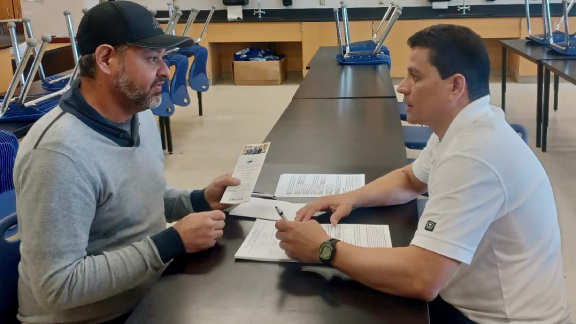
TESOL MAT
The TESOL MAT Program is one pathway for preservice teachers to become ESL teachers. This program is designed for candidates who would like to obtain their NC ESL licensure and Masters of Arts in Teaching.
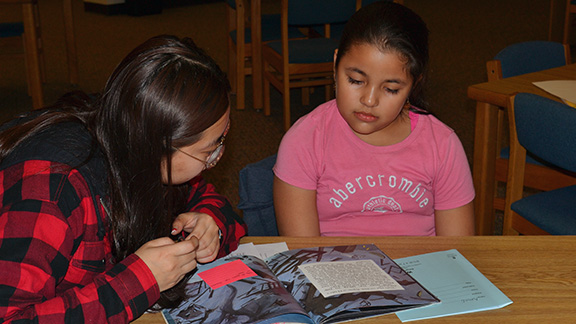
NC TEACh
North Carolina Teachers of Excellence for All Children (NC TEACH) allows teachers with a full-time teaching position as an ESL teacher to obtain their licensure while continuing to teach.
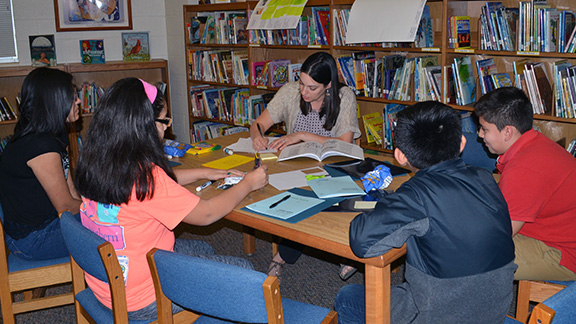
ESL Add-on
The ESL Add-On Licensure program is designed for K-12 teachers with NC initial licensure who would like to take courses and obtain their ESL licensure.
Which tesol program is right for you?
Take a quick Self-Assessment to see which TESOL program might be the best fit for your career goals or consider watching the video below.

Professional Learning Community (PLC)
Ignite PLCs are designed to support multilingual learners and their families. All PLCs focus on promoting literacy through either 1) providing families with evidence-based strategies or 2) facilitating the use of data by educators to enhance students’ literacy skills based on the needs of the school and local communities.
IGNITE News

EnACTeD and IGNITE Provide Support to GCS Teacher of the Year
An active participant in the UNC Greensboro School of Educatio…
Learn MoreUpcoming Events
Resources
PLC Supply/Family Stipend Request
- Parent Stipend/Gift Card List (use to provide names/emails of parent participants receiving stipends)
- Participant Stipend Instructions
Event Registration
- Annual UNCG TESOL Celebration
- Annual Project Ignite Kickoff Event
- FLANC Conference. Prior approval required. Contact Project Manager for available funding.
- SETESOL/Carolina TESOL Conference. Prior approval required. Contact Project Manager for available funding.
- Class Measures, Closing the English Language Learner Gap, webinar – Class Measures is a Massachusetts-based company that provides educational consultant services to teachers, schools, districts, and educational authorities related to licensure, quality improvement reviews, and action planning. During this webinar, expert consultants from Class Measures will discuss how schools are addressing gaps in achievement and improving outcomes across the board. (program description provided by Class Measures)
- Coordinating Title I and Title III Services to Provide Programs for English Learners in Homeless Situations – This webinar explores the requirements for program coordination and collaboration between educational programs that serve Multilingual Learners (MLs) and education programs that serve students experiencing homelessness.
- North Carolina Department of Public Instruction (NCDPI) – North Carolina Dual Language/Imersion (DL/I) hosts quarterly webinars on a variety of dual language topics.
- North Carolina Dual Language/Immersion (NCDL/I) Programs – This site provides resources, information, and materials for dual language and immersion programs to meet North Carolina educational standards. Access the DL/I FAQ document.
- North Carolina English Language Development – The English Language Development site provides an assortment of resources including Title III information, EL Conference, EL Advisory Council, and EL Support Team.
- English Learners in North Carolina Dual Language Programs: Year 3 of this Study: School Year 2009-10 – This document provides a briefing to North Carolina Department of Public Instruction staff on major findings from Year 3 of the study investigating the effects of two-way dual language programs on student groups of instructional interest, including multilingual learners, language minority students who are not English learners, native-English-speaking African American students, native-English-speaking Caucasian American students, native-English-speaking students of mixed ethnicity, students of low socioeconomic status as measured by participation in free and reduced lunch services, and students with exceptionalities (qualifying for special education services) in North Carolina. The data analyzed in this third report is from the 2009-2010 school year.
- Dual Language Education Programs: Current State Policies and Practices – A public domain report produced under U.S. Department of Education Contract No. ED-04-CO0025/0018 with American Institutes for Research.
- Dual Language Learners Toolkit – Designed to support early childhood educators, the Dual Language Learners Toolkit provides three sections of instruction: administrators and managers; teachers, caregivers, and family services staff; and families.
- English Learner Tool Kit – Provided by the Office of English Language Acquisition, the English Learner Tool Kit has been updated with references to the Every Student Succeeds Act of 2015 (ESSA).
- Newcomer Tool Kit – Designed for Primary and Secondary educators, principals, and support staff, the Newcomer Tool Kit is for use with immigrant students—including asylees and refugees—and their families.
- EdTech for English Learners – The full study report (available in Spring 2019) examined how districts and educators use educational technology to instruct EL students. Available immediately, are two toolkits. Both are designed to enhance the quality and use of technology for teaching ELs. The Educator Toolkit includes five guiding principles to apply when exploring new methods of supporting ELs through technology, which will help educators identify their students’ unique needs and which technologies would be most beneficial. Access the Press Release.
- HOMEROOM: The Official Blog of the U.S. Department of Education – José A. Viana, assistant deputy secretary and director of the Office of English Language Acquisition, describes his Back to School Tour in this blog post. He visited schools that are part of #RethinkSchool for multilingual learner students in Arizona, Utah, Colorado, and Wyoming.
- Federal Office of Elementary and Secondary Education – “The Elementary and Secondary Education Act of 1965 (ESEA), as amended by the Every Student Succeeds Act (ESSA), (herein referred to as the ESEA), strives to ensure that ELs and immigrant youth attain English language proficiency and meet the same academic standards as their peers. This webpage contains information about requirements related to ELs in the ESEA, and provides links to resources to support States in developing and implementing programs and services for ELs.”
- Office of Elementary and Secondary Education – From the US Department of Education, this site offers Elementary and Secondary Education: Multilingual Learner Resources.
- North Carolina Department of Public Instruction – NCDPI offers a multitude of resources to cultivate professional development for multilingual learner educators including webinars for professional learning, training resources, and opportunities for collaboration with others in the field.
- #GoOpenNC – #GoOpenNC is the North Carolina, preK-12, open education resources initiative. #GoOpenNC is also the name of the platform where NC educators can search for, curate, and create openly-licensed, educational resources that are aligned to NC standards.
- The Center for Applied Linguistics – Founded in 1959, The Center for Applied Linguistics has garnered international praise for its work in the fields of bilingual and dual language education, English as a second language, world languages education, language policy, assessment, immigrant and refugee integration, literacy, dialect studies, and the education of linguistically and culturally diverse adults and children.
- TESOL International Association – The official TESOL International Association
- Understanding Language (Stanford University) – Provided by Sandford University, the Understanding Language program develops open-source education resources for English Language educators.
- WIDA (University of Wisconsin – Madison) – A division of the Wisconsin Center for Education Research at the University of Wisconsin, the WIDA program provides English Language education assessment tools and resources.
- Guiding Principles for Dual Language Education – Third Edition – From The Center for Applied Linguistics, Guiding Principles for Dual Language Education – Third Edition is a tool for Multilingual Learner educators. This resource is free for digital download.
- Growing Superdiversity among Young U.S. Dual Language Learners and Its Implications by Maki Park, Jie Zong, and Jeanne Batalova – This report from the Migration Policy Institute investigates the diversity withing the Dual Language Learner community in the United States.
- Culturally Relevant Books and Resources – The CUNY-NYS Initiative on Emergent Bilinguals has gathered a variety of resources together for educators to curate a culturally and linguistically rich environment for young bilinguals.
- Reframing language allocation policy in dual language bilingual education by María Teresa (Maite) Sánchez, Ofelia García, Cristian Solorza – This article addresses language allocation policies in what is increasingly called “Dual Language Education” (DLE) in the U.S., offering a challenge to the strict language separation policies in those programs and a proposal for flexibility that transforms them into “Dual Language Bilingual Education” (DLBE). The article offers a historical review of policies and practices in bilingual education and the ways in which the present language policies for DLE have come about. It then provides a critical assessment of those policies, which focus on teaching two languages, rather than educating students bilingually. We argue that the rigid language allocation policies of DLE ignore the sociolinguistic realities of bilingual learning for all students, especially for language-minoritized bilingual students. The main part of the article sets forth a new alternative policy proposal for language allocation that more coherently reflects the dynamic nature of bilingualism and reclaims the criticality of bilingual education and its social justice purpose. The proposal embodies an understanding of bilingual education through a translanguaging lens to open up spaces where students develop not only their bilingualism and biliteracy, but also a criticality that resists social arrangements of language normativity that differentiate and exclude. The translanguaging allocation policy proposed here works with the existing spaces for English and the Language Other than English, but introduces three components that offer the flexibility and criticality needed to educate bilingual students for the future: (1) translanguaging documentation; (2) translanguaging rings; and (3) translanguaging transformative spaces.
- The ESL/ELL Teacher’s Survival Guide by Larry Ferlazzo and Katie Hull-Sypnieski – “The ESL/ELL Teacher?s Survival Guide offerseducators practical strategies for setting up an ESL-friendlyclassroom, motivating and interacting with students, communicatingwith parents of multilingual learners, and navigating the challengesinherent in teaching ESL students.” –Publisher provided
- Boosting Achievement: Reaching Students with Interrupted or Minimal Education by Carol Salva and Anna Matis – Boosting Achievement is a guide to help educators and school districts navigate the challenges and learning opportunities unique to SIFE (Students with Interrupted Formal Education). – Editorial Review
- Patterns of Power: Inviting Young Writers into the Conventions of Language by Jeff Anderson – “Not only is this book full of fantastic ways to make abstract grammatical concepts more concrete and accessible for young writers, it’s also designed to deepen the teacher’s conceptual understanding in ways that honor all learners– even the grown-up ones. If you think “progressive tense” means someone named Flo is trying to angrily sell you insurance, then this is definitely the book for you!” -Amazon Reviewer
- Psychology Today – According to 2016 data from the American Community Survey, the number of individuals who are bilingual in the United States has nearly doubled. These numbers do not include children under the age of five.
- Edutopia – As the author of this blog post declares, teaching English language learners is “a complex endeavor.” In a personal and reflective manner, the author discusses America’s future classrooms of increasing diversity and a few of the many approaches for teaching ELs based on interviews with teachers.
- Bilingual Kid Spot – This brief blog post provides definitions of the different types of bilingualism. It explains some facts and some common misconceptions about bilingualism. It’s a good basic introduction to bilingualism.
- The Atlanta Journal-Constitution – High school students enrolled in an early childhood education course spent a day at a Dual Language Immersion (DLI) program in an elementary school observing how the two classroom teachers taught one part of the day in one language and the other part of the day in a second language. The field trip was an effort to have the high school students, many of whom are multilingual, consider a career as a DLI teacher.
- Education Week – Two studies have concluded that the guided use of social media can support high school students in learning English. It was found that students’ literacy and language skills in English increased with in-class use.
- The Chicago International Charter School West Belden, where more than half of the students are multilingual learners, is using a personalized learning approach. Educators quickly realized they first needed to spend time teaching students some non-technological skills (e.g., work with partners, staying focused during independent study) before introducing students to individualized technology.
- The Wampanoag tribe of Mashapee, Massachusetts, has established a language immersion school to revive their native language, which was virtually eliminated during colonization. After more than six generations of no one speaking Wampanoag, about 500 people, including preschoolers, are now learning the language.
- Ed Source – Over the past four years, the Fresno Unified School District has been successfully engaging preschool parents in school activities. Building the relationship starts with the child’s teacher interviewing families using a conversational protocol that asks about their home language and what they want for their child.
- Harvard Graduate School of Education:Usable Knowledge – What do mainstream classroom teachers need to know to effectively teach the multilingual learners in their classrooms? By following six principles and three steps presented here, these teachers can become more linguistically responsive teachers.
- Tonya Ward Singer’s Blog – This blog post lists 10 simple ways teachers can value their students’ home languages and celebrate multilingualism (e.g., Build Multilingual Greetings into Your Routine, Take Risks to Learn New Languages).
- New America – Do Dual Language Immersion programs, where all students learn in two languages, cost more than monolingual English programs to implement? A new study of Portland Public Schools explores this question. Its findings may surprise you.
- This interview with Debra Ackerman, an early childhood assessment expert, discusses the new study she completed on how states use their Kindergarten Entry Assessments to assess young English language learners.
- Hands-On Reading Comprehension Strategies for All Learners –Jill Haney shares practical strategies for teaching English language learners reading comprehension skills. These strategies are derived from the research literature on reading.
- The Name Jar by Yangsook Choi – The new kid in school needs a new name! Or does she?
- Mama the Alien/Mama La Estraterrestre by Rene Colato Lainez – Young Sofia finds her mother’s alien resident card, and her mother confirms the truth: she is an alien. Sofia’s imagination runs wild with questions. Does her mother visit her alien friends at night? Does her mother speak three languages—English, Spanish, and Alien? Is Sofia an alien, too? This is a very lighthearted and simple story about residency in the United States, particularly for Hispanics. -Publisher
- My Diary from Here to There/Mi diario de aqui hasta alla by Amada Irma Perez and illustrated by Maya Christina Gonalez – Written in Spanish and English, My Diary from Here to There is the story of a young girl’s journey from Mexico to Los Angeles as she records her hopes, her fears, and her dreams.
The following resources may be accessed through the Michel Family Teaching Resources Center located in the School of Education on the UNC Greensboro campus.
- Abriendo Brecha by Michael D. Guerrero ISBN: 0984316973
- Teaching Reading and Writing in Spanish and English in Bilingual and Dual Language Classrooms by Yvonne S. Freeman; David E. Freeman ISBN: 9780325008011
- Dual Language Instruction from A to Z by Else Hamayan; Fred Genesee; Nancy Cloud ISBN: 9780325042381
- Bilingual Education in the 21st Century by Ofelia García ISBN: 9781405119948
- Don’t Tell Anyone (No Le Digas a Nadie) – This 2015 Peabody Award winning documentary follows the trials and tribulations of Angry Rivera, an undocumented citizen, as she navigates life in the Youtube spotlight.
- Living Undocumented Series – This docuseries on undocumented youth and the impact DACA has (or hasn’t) made on their lives.
